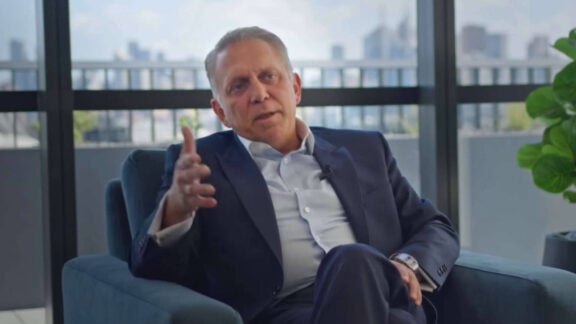There is more disseminated today than ever before about suicide. However understanding suicide prevention is still a journey to be had for the majority of Australians. The most important understanding is that more people are needed on the ground to support – in person – the critically vulnerable. The narratives that culminate in suicidal ideation are various and so too the tipping points that trigger suicide attempts. In my experience the most critically vulnerable often do not reach out but when some critically vulnerable do, it’s not for long – and where possible in that brief scream for help we’ve got to be there to spread the love, to resonate and to save a life.
There have been times I’ve been phoned by someone in their direst distress, on their way out and I have not always been able to connect them with support. Why? The support that some presume either does not exist or refuses to be there. Most services do not have after-hours outreach services let alone an after-hours or weekend phone service. The majority of funded services tasked to respond with in-person suicide prevention don’t do this. Some services do have personnel who should be attending but don’t and argue instead the fact that they are backlogged, underfunded, overstretched, exhausted with the relentless in-house support meted to the walk-ins. This scenario is not discussed but it is the predominant circumstance in the ‘suicide prevention space’. Yes, I do respond but that’s because I always have even when I wasn’t remunerated to do so because compassion is not something that should be compartmentalised. However much too much depends on goodwill and volunteers.
The Australian suicide toll will not be reduced unless we understand the various circumstances of those at-risk and of particularly those critically at-risk. There is a difference between the at-risk and the critically at-risk. There are those who scream for it all to end and countenance suicide and there are those who are ready to suicide, whose resistance to the act of suicide is gone and a tipping point, such as homelessness, eviction, bullying, a relationship breakdown, a confrontation with a loved one or authority, a slur, an aspersion will trigger the suicide attempt.
I spent two hours talking to a youth with a rope around his neck. He is now doing well. I spent a Friday, the weekend and the Monday, listening and talking to an evictee from public housing, a homeless mother – whose newborn was removed at birth unto the care of the state, and who is homeless with her 15 year old daughter. The mother exhausted by the constancy of her circumstances was ready to end it all. There were no services that were able to respond. This is why the suicide toll is increasing.
Not every life taken by one’s own hand is because of a degenerative mental illness or disorder. Yes, those diagnosed with serious mental ill-health are one of the elevated risk groups, but in my experience the majority who take their life are not mentally unwell. They take their life because of a sense of hopelessness where they feel they can’t cope any longer with a seemingly inescapable set of dire life circumstances. Suicide is also the reality of the relatively mentally well.
The suicidal include people financially stressed, the unemployed, the homeless, those released from prison, newly arrived migrants, those with a sense of failure, the bullied, the mobbed, the psychologically and physically abused. Suicide prevention majorly requires assisting people in the improving of their lot, in supporting them to changing their life circumstances and through this contributing and validating a dawn of new and favourable meanings; to new contexts.
We need to be careful to not to simplify everyone into mental ill health. A constancy of trauma does not necessarily background mental ill health although there is an elevated risk to the degeneration to aggressive complex trauma and clinical disorders. Housing, education, employment coupled with psychosocial support, mentoring are vital in journeying many out of a frothing cesspool of troubles. Services are not structured so as to respond in tangibly supportive ways to people in crisis. It’s easier to have someone arrested, committed, medicated.
Where are the pathways to housing, education, future building? Resilience is one thing but hope another thing. Resilience fights for survival but while in the dark. Hope is a light that does away with stumbling in the dark. Resilience asks of vulnerable individuals to adjust their behaviours – but how far and for how long when there is no hope on the horizon? It’s the hope we have to build in and this can only be founded with people on the ground to be there for the critically vulnerable – 24/7.
Some will argue that the majority of the homeless have mental ill health issues, similarly so with prisoners and former inmates. It is my experience that the majority of the homeless and inmates do not have severe mental ill health. There are many with irrecoverable mental ill health, others manageable or recoverable mental health illnesses but the majority I have come across are relative mentally well and it is their life circumstances that have dealt them a psychosocial hit or blows.
The depression and suicide tolls will increase as economic downturns, marginalisation and inequalities increase personal hardships. Addictions and isolation culminate and relationship difficulties increase. Suicidal ideation is borne from aching. More needs to be done to support people, to integrate pathways to opportunities that improve life circumstances and relieve pressures. Instead government and philanthropic funding goes to the carpetbaggers who pollute the suicide prevention and mental health landscapes – to institutes of researchers.
Will more research reduce the escalating suicide rate? No, it won’t. Will the supporting of people into housing, stability, education, employment, validating and mentoring them, listening to them reduce the escalating suicide rate? Yes. Will disaggregating to people’s issues reduce depression, trauma and suicidal ideation? Yes.
It’s wrong to be spending limited pools of funds on research and pretending this as a way forward when all funding should be directed to providing people with the support needed to overwhelm the negative impacts of some of what life has thrown at them.
People need people. There is no greater legacy than to improve the lot of others.
* Gerry Georgatos is the nation’s most prolific writer on suicide prevention; a suicide prevention and prison reform researcher and advocate with the non-tertiary Institute of Social Justice and Human Rights. He is a member of national projects to further develop suicide prevention, and well-being and education programs in prisons. Gerry’s research has a focus on trauma recovery and restorative approaches. He works first-hand with the critically vulnerable and marginalised. He is also a prolific writer on the understanding of racism and on the ways forward from racism.








